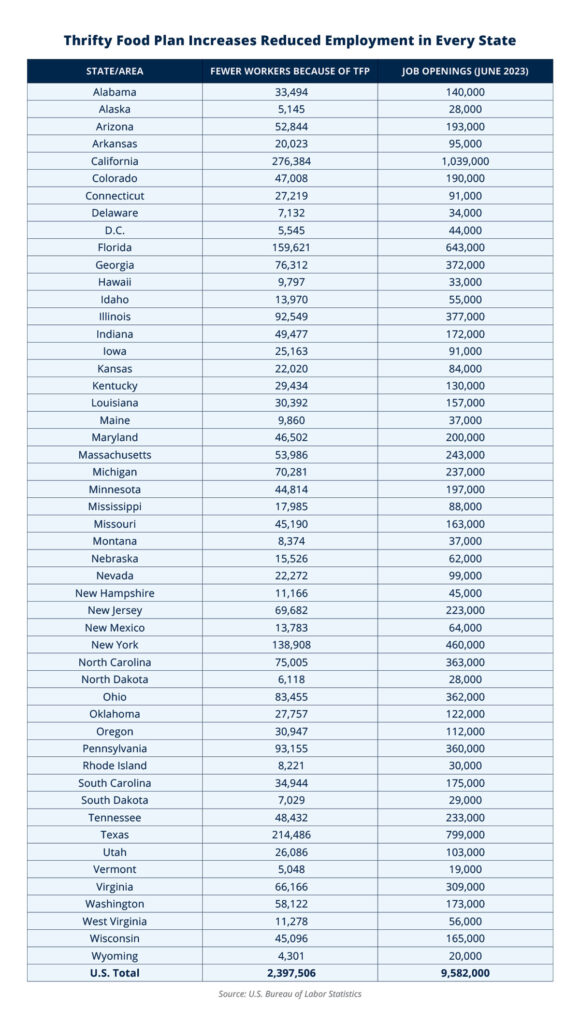Biden’s Food Stamp Increase is Discouraging Work
In 2021, Biden’s U.S. Department of Agriculture (USDA) rushed through a 27 percent hike in food stamp benefits, bypassing Congress and several internal control standards in the process. The result was an astronomical increase in food stamp spending, expected to cost taxpayers up to $250 billion over the next decade.
It’s busting budgets. It’s making food prices go up. And according to a new paper by the Foundation for Government Accountability, it’s also discouraging work.
After the pandemic, job openings rose above 10 million for the first time ever—and have largely stayed there.
One of the reasons behind it has been the massive expansion of welfare under the Biden administration, especially the food stamp program. Due to the increase in benefits, an estimated 2.4 million able-bodied Americans chose to remain on welfare instead of returning to work. Every state has at least 4,000 fewer workers in the workforce thanks to President Biden’s policies.

As the paper notes, if just a quarter of those sitting on the sidelines found work and increased their incomes to levels where they were ineligible for benefits, it would save taxpayers more than $1.6 billion annually. Without this food stamp increase, these individuals would have found jobs across industries, filling nearly a quarter of the country’s open jobs.
What can be done?
With the Farm Bill coming up, Congress has an opportunity to discuss reforms to the food stamp program. There are three choices available:
#1: Roll back food stamp benefits to their 2020 levels.
This would remove USDA’s 27 percent increase by adjusting the Thrifty Food Plan back to where it was in 2020. A rollback would incentivize Americans to get back to work and would protect resources for the truly needy.
#2: Freeze food stamp benefits until they match 2020 inflation-adjusted levels.
This would avoid the difficulty of reducing benefits, but it could take several years to bring benefits back to the same levels before the Thrifty Food Plan increase.
#3: Require all future reevaluations of food stamp benefits to be cost-neutral.
This would ensure that USDA is only able to increase benefits in the future to account for inflation—not to expand welfare further and encourage more Americans to leave the workforce. On its own, this option wouldn’t remove the increase already in place, but it could pair well with one of the other reform options.
Learn more about food stamp reform opportunities in the Farm Bill.
FGA research in the news
Wall Street Journal: End Biden’s Food-Stamp Expansion
New York Post: Biden’s food stamp expansion linked to 15% jump in grocery prices: study
Fox News: Biden’s food stamp expansion linked to 15% jump in grocery prices, study says
